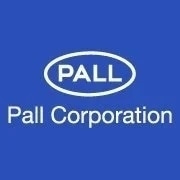Virus safety is a crucial part of biopharmaceutical manufacturing. There are intrinsic risks related to virus safety in the handling of animal cell culture. Chinese Hamster Ovary (CHO) cell lines are the most frequently found production platform for expressing glycosylated proteins and monoclonal antibodies.

Image credit: Pall Corporation
Due to their rodent origins, CHO cell lines can harbor endogenous retroviruses or retrovirus-like particles. Additional virus safety risks arise from the potentiality that the cell culture could be compromised by adventitious viruses.
Consequently, the regulatory expectation for manufacturing platforms is to demonstrate the capacity to eliminate or inactivate a broad range of viruses to limit the impact of viruses on the safety of patients.
Virus inactivation (VI) is one of the main elements when offering virus safety. It targets enveloped viruses that could be present in the product feed, generally the eluate from the Protein A chromatography step.
A commonly accepted solution is exposure to low pH conditions (e.g., pH 3 – 3.6) by acidifying the solution with acetic acid and sustaining the low pH for a predetermined amount of time (typically 60 minutes).
There are numerous approaches for continuous VI; one that is currently being explored by the bioprocessing field is reliant on a plug flow contactor. In this hypothesis, the pH of the eluted monoclonal antibody is reduced in-line as it flows into a tubular plug flow contactor.
The tubular plug flow contactor’s length is selected in a way that produces the necessary residence time for the inactivation process. Some of the challenges that are faced with the plug flow concept include managing concentration gradients in the process, scale-down validation, and managing process disturbances and upsets.
Additionally, forward processing usually necessitates homogeneous process conditions. Pall’s method for continuous VI is dependent on repetitive batch inactivation.
When designing and developing Pall’s Cadence® VI system, the suggested failure mode and effects analysis (FMEA) approach taken hints at the fact the product risks and process risks do not differ considerably with this approaching relation to the batch equivalent.
Pall’s continuous VI concept depends on an approach equivalent to the well-known batch VI process, and resultingly the key process parameters (CPPs) are also identical. This approach eradicates a great number of uncertainties in scale-down validation, and it offers homogeneous process conditions for forward processing.
Pall’s Cadence® VI system has the possibility of being effectively utilized for both low pH VI as well as solvent/detergent VI.
Virus retention filtration is the final step in enabling virus safety in the downstream processing of monoclonal antibodies. It helps eliminate viruses by size and has been developed to specifically target small viruses.
It is typically assumed that the virus filtration step has no impact on any other quality attribute, and thus the vital process parameters are exclusively related to the removal of the virus.
In a continuous downstream processing platform that is completely integrated, the virus retention filtration is conducted at constant flow, whereas running the process at constant pressure is the procedure most frequently used for batch virus filtration.
Unlike batch processing, where the output from the previous step is pooled before virus filtration, it is possible that variabilities in protein concentration/pH/conductivity etc., are present in the feed to the virus filter in a continuous process.
These variabilities are a result of the nature of the previous step (e.g., chromatography column eluate). If a surge vessel is utilized between these unit operations, it could be sized to offer a homogenous feed to the virus filtration step.
Yet, if a surge vessel is not used, the variability in protein concentration/pH/conductivity on the performance virus removal needs to be appropriately risk assessed. If prior knowledge is not on hand, it may be necessary to conduct a virus clearance study to include these variables.
Throughout the process, the virus retention filter collects viruses and some protein within the tortuous flow path. As a consequence, it is normal to observe a decay in flux in the course of the batch virus filtration step. This flux decay is due to the filter’s gradual increase in resistance.
In continuous processing, this will correspond to a pressure differential increase across the filter. Therefore, as long as the virus validation studies are conducted in a way that both the minimum and maximum pressures are studied, the data will be relative to the continuous process as well.
The key process parameters for continuous virus filtration would then translate into the maximum volume to be processed (akin to batch virus filtration) and the maximum acceptable back pressure (equal to the flux decay in the batch virus filtration process).
These CPPs can be studied utilizing constant pressure, and – as long as the design of the study covers the whole operating range of the virus filtration step – the results can be applied to a constant flow process.
Another factor that must be considered when selecting an appropriate virus filter and developing the virus filtration step is its capacity to handle process interruptions. This element should be taken into account for every step in the continuous downstream processing platform, but it could be increasingly crucial for virus filtration.
The reason being is that not all virus retention filters can withstand process interruptions in the same manner. In some filters, release of the transmembrane pressure and/or process interruptions can influence the filter’s virus removal capability as a result of so-called back-diffusion.
About Pall Corporation

Pall Corporation is a global leader in high-tech filtration, separation and purification, serving the diverse needs of customers across the broad spectrum of life sciences and industry.
Pall Life Sciences provides cutting-edge solutions for customers who discover, develop and produce biotech drugs, vaccines, cell therapies and classic pharmaceuticals.
Our advanced medical technologies are often a patient’s last line of defense from dangerous pathogens. And our food and beverage products provide critical protection from contaminants during various manufacturing steps.
Pall Industrial serves customers in the microelectronics, aerospace, fuels, petrochemical, chemical, automotive, and power generation industries.
Our products play key roles in:
- Manufacturing innovative semiconductors and consumer electronics
- Filtration for commercial and military aerospace vehicles
- Maintaining reliability of essential industrial equipment
- Addressing mounting water quality, scarcity and demand issues
- Helping energy companies maximize production and develop commercially successful next generation fuels
Headquartered in Port Washington, New York, Pall has offices and plants throughout the world.
For more on how we enable a greener, safer future, visit Pall - Enabling A Greener, Safer Future.
Sponsored Content Policy: News-Medical.net publishes articles and related content that may be derived from sources where we have existing commercial relationships, provided such content adds value to the core editorial ethos of News-Medical.Net which is to educate and inform site visitors interested in medical research, science, medical devices and treatments.